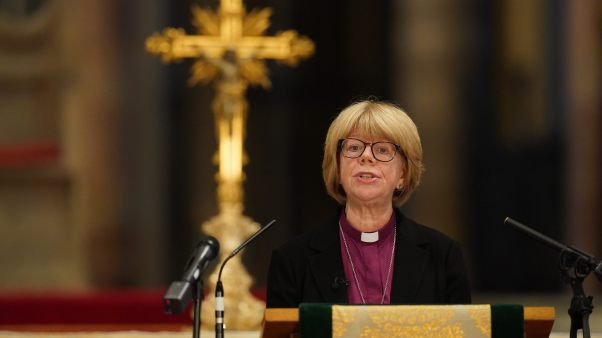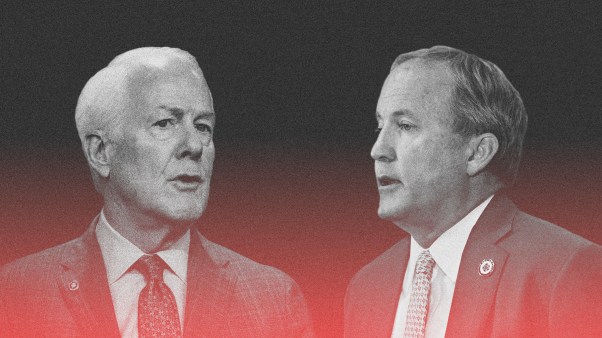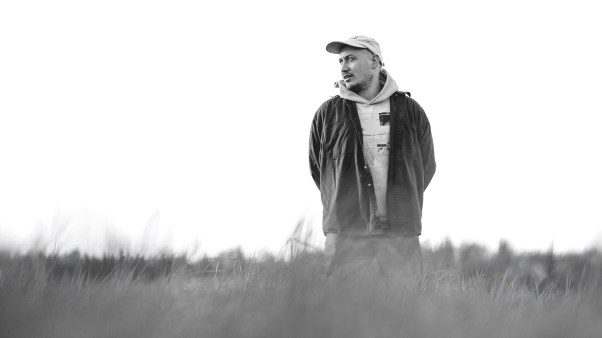The death of painter Marc Chagall in March left unresolved an intriguing puzzle. While Chagall never lost appreciation for his Hassidic roots, another religious motif surfaced in his work very early. And therein lies the puzzle.
Chagall’s paintings seethe with religious symbolism from his past. The Star of David, torahs of all sizes and shapes, Tables of the Law, menorahs, and angels crowd his canvases.
In addition to scattering these elements through his paintings, Chagall painted a number of canvases specifically dealing with biblical subjects and depicted the sweep of the biblical story in The Biblical Message—a massive work now housed in its own museum.
Chagall also turned to the modern Jewish community for subjects, recording rabbis, old men in their prayer shawls, readers in the synagogue, and Jewish weddings and funerals.
Madonna And Cross
But another set of religious motifs began to appear early. Chagall incorporated Christian symbols into his work. In the same year (1912), he painted pictures of an old Jew, a shofar in the synagogue, a man holding the Torah, a Madonna and Child, and a study for a painting of Jesus on the cross.
Of the Christian symbols he used, the crucifixion seemed to fascinate Chagall most. One early use of this subject is the 1912 painting Golgotha. In it a gigantic John and a diminutive Mary stand at the foot of a cross where a child Jesus is crucified.
The crucifixion as a subject for his paintings seems to increase substantially in the period from the late thirties to the fifties. He painted crucifixions titled Descent from the Cross, Yellow Christ, Crucifixion and Candles, and Persecution. An interesting feature of many of these is the use of a Jewish prayer shawl for Jesus’ loin cloth.
This movement toward Christian elements came to fruition in the sixties when he designed the stained glass windows for the cathedrals in Metz and Rheims. The Rheims windows are seen by some as his greatest work.
While this development could be seen as a commercial device to sell his work, it is a matter of deep concern to some fellow Jews. In 1977 S. L. Shneiderman, a Jewish journalist and historian, wrote an article for Midstream addressing the crucifixion theme in Chagall’s works. The intriguing title was “Chagall—Torn?”
Shneiderman points out that even after Chagall had turned to the crucifixion theme, “Jews came to accept even his Christian motifs as symbols of Jewish martyrdom through the ages, from the days of the Roman conquerors of Judea down to the Nazis, to those crimes against the Jewish people [to which] the earthly vicar of Christ had turned a blind eye.”
He captures the irony of the occasion when Chagall’s magnum opus, the stained glass windows at Rheims, was consecrated:
“Sprinkling holy water from his aspergillum in the direction of the windows, Msgr. Menager, Archbishop of Rheims declared: ‘We see before us the Story of Redemption.’ The afternoon sun outside lent a dazzling brilliance to the vivid colors of the design that did full justice to the talent of the master who had created it: Marc Chagall, the greatest Jewish painter of our time.”
Two Puzzles
Shneiderman is puzzled by two things. First, the lack of response from the Jewish public about Chagall’s glorification of Jesus. He attributes this to the ecumenical movement. He believes Jews saw Chagall’s work for Catholic churches as confirmation of the progressive spirit of interfaith rapprochement. Second, why did Chagall turn to the Christian faith for inspiration?
For Shneiderman, the mystery is compounded by Chagall’s apparent personal identification with the crucified Jesus. Chagall includes himself in several crucifixion paintings. One shows him sitting, palette in hand, by a gigantic canvas on which he has painted Christ on the cross. In a more curious painting, Chagall shows himself on the cross with a palette in one hand and a painting on an easel standing next to the cross.
Shneiderman tells how he sought an answer to his questions about Chagall’s faith from the painter himself. The appointment was made by Chagall and then cancelled at the last moment a few hours later by Mme. Chagall. His questions remained unanswered.
Shneiderman quotes a 1977 letter written by Chagall:
“My God is the Jewish God, the God of our Fathers. My Holy Book is the Bible. In my fantasy ‘Christ’ is only our Jewish martyr, with his Jewish mother, surrounded by our Jewish prophets. Never have I depicted evangelist figures. I have never painted the Evangel but our own Bible.”
Shneiderman seems unconvinced. He points to the official description of the Rheims windows by Charles Marq, the master glassmaker who executed Chagall’s designs: “The rosette evokes apocalyptic figures of the four evangelists … the design is clear, the color exalting. Chagall has achieved a mystic marriage with the edifice.”
Perhaps only God knows whether Chagall’s preoccupation with the crucifixion means that the Messiah won this great painter to himself. Shneiderman doesn’t know. He concludes his article with a question: “Is Chagall torn?”
JOHN V. LAWING, JR.1Mr. Lawing is associate professor of journalism at CBN University in Virginia Beach, Virginia.
It’s a Crime!
Put rock ‘n’ roll to film footage of a live concert (or just about anything), and you have a music video. Put Christian rock ‘n’ roll to film footage of criminals wreaking havoc in the inner city, and you have a new twist in Christian music videos.
I recently watched “Crimes,” the Resurrection (Rez) Band’s first attempt at rock video, from the safety of my suburban living room. Between scenes of punks smashing up a car and young prostitutes stirring up business, lead vocalist Wendi Kaiser and other street-wise characters were belting out a song about grace breaking the vicious circle of crime.
The five Rez Band musicians are not the first Christians to venture into this controversial art form—Amy Grant, Steve Taylor, Mercy Mercy, and others have ignored criticism that rock videos are inherently evil and are already lip-synching for the Lord. But the Rez Band is the first act to defy the pros and make a video by themselves.
Joint Venture
Well, sort of by themselves. The Rez Band is an offshoot of Jesus People U.S.A. or JPUSA (pronounced Juh-POOZ-ah by its friends), a community of about 450 people committed to living out their faith in the low-income neighborhoods of Chicago’s North Side, JPUSA, which includes actors (Holy Ghost Players, Streetlife Theatre), writers and editors (Cornerstone magazine), and less visible folks working with prisoners, drug addicts, and the elderly, rallied behind the band.
“We didn’t have the money to hire pros,” says drummer John Herrin, “so we had ten amateurs making decisions. Only the director had filmmaking experience, and he hadn’t been at it for nine years.”
Director Mike Tabor, who is now back at work as an estimator in the community construction office, laughs a lot when asked about the low-budget video. “Everybody at JPUSA got in the act. Even the old lady who sticks her head out of the fire-escape window and yells ‘Crimes!’ in the video is part of a four-generation family living with us.”
As if their task were not formidable enough, the Rez Band et al shot outdoors on six of the coldest days in Chicago’s history. The finale—in which the whole community pours into the street singing, “No no no—No more crimes!”—had to be postponed when the wind-chill factor dropped to 78 degrees below zero.
Otherwise the crew didn’t slow down, despite cold that caused the tape player to stop taping on the first day, the zoom lens to stop zooming the third day, and band members to huddle in a makeshift hospitality room for warmth between takes. Not to mention a light leak in the camera that messed up color correction.
The result: a surprisingly professional music video for $13,000, about one-fifth of what most commercial videos cost. (The simplest start at $20,000; the most elaborate peak at around $200,000.)
Seamy Realities
But why spend time and money making videos in the first place? And why “Crimes,” which focuses on the seamy, violent realities of life?
“We live in a visual society,” says Tabor. “Rock videos are intense. People are affected by them. If we Christians don’t make our mark on the visual realm, we’re missing part of Christ’s work. Video gets our message of reconciliation across more strongly.”
“We picked ‘Crimes’ because it’s about our neighborhood,” adds Herrin. “It’s about us and people we know. We’re trying to reach out to inner-city kids—kids who listen to secular music and go to secular schools and hang out with non-Christians and may or may not call themselves Christians. We want to say that Christ transcends fads. Trendy kids are called to be disciples.”
Now that MTV has picked up the Rez Band video, trendy folks and not-so-trendy folks can more readily witness “Crimes” for themselves. The Rez Band, who are “not interested in becoming successful in the mainstream Christian marketplace,” will leave some Christians and non-Christians cold. But others, like one teary-eyed ex-prostitute who saw an early screening in her neighborhood, will watch and recognize what is, was, or could have been.
ROBERT M. KACHUR2Mr. Kachur is assistant editor of HIS, Inter-Varsity Christian Fellowship’s magazine for college students.










